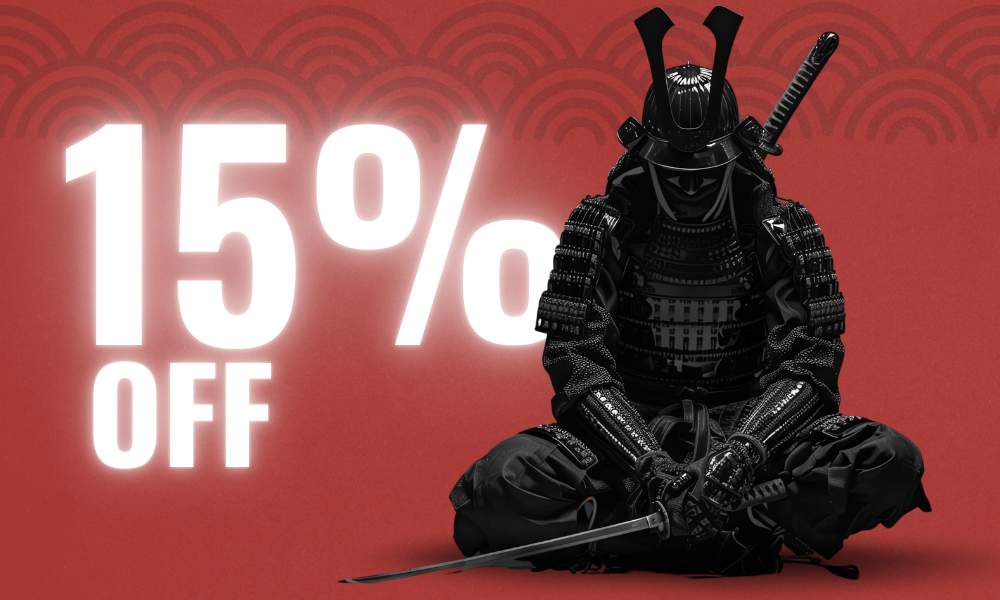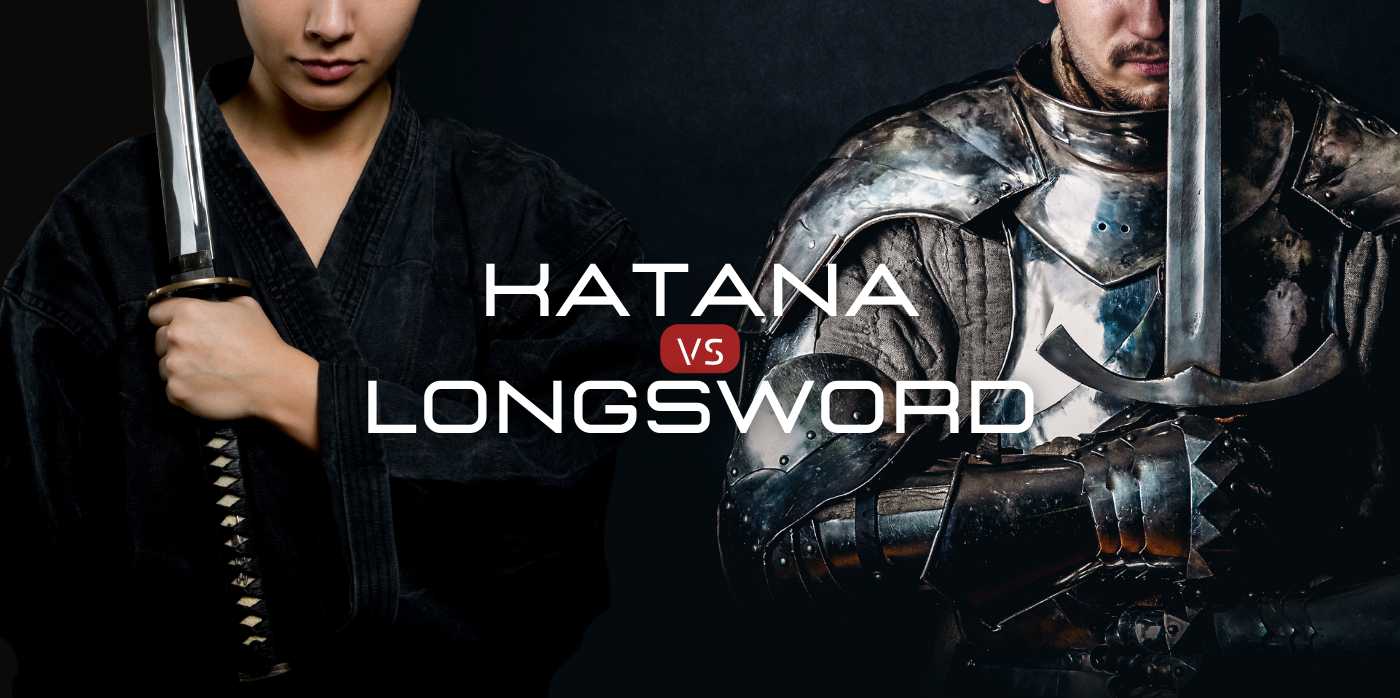The duel of steel and history: The Katana vs. the Longsword. Two iconic weapons representing two different worlds - the East and the West. The Samurai sword and the European sword are legendary in their own rights, and understanding their distinct craftsmanship, history, combat styles, and maintenance requirements offer insights into the cultures they come from. So, how do these two blades stack up against each other? Let's delve in.
Understanding the katana and the Longsword
The Katana is a Japanese sword characterized by its distinctive curved, single-edged blade, circular or squared guard, and a long grip that accommodates two hands. The elegance and cultural significance of the Katana have earned it the title "Samurai’s Soul" in Japanese history.
The Katana's blade is typically between 23.62-28.74" (60-73 cm) in length, but its most defining feature is its unique curvature. This curve allows the Samurai to draw the sword and strike in a single fluid movement. The "Iai" method (rapid draw), which embodies the Samurai maxim "one strike, one kill" is made possible by the katana's design.
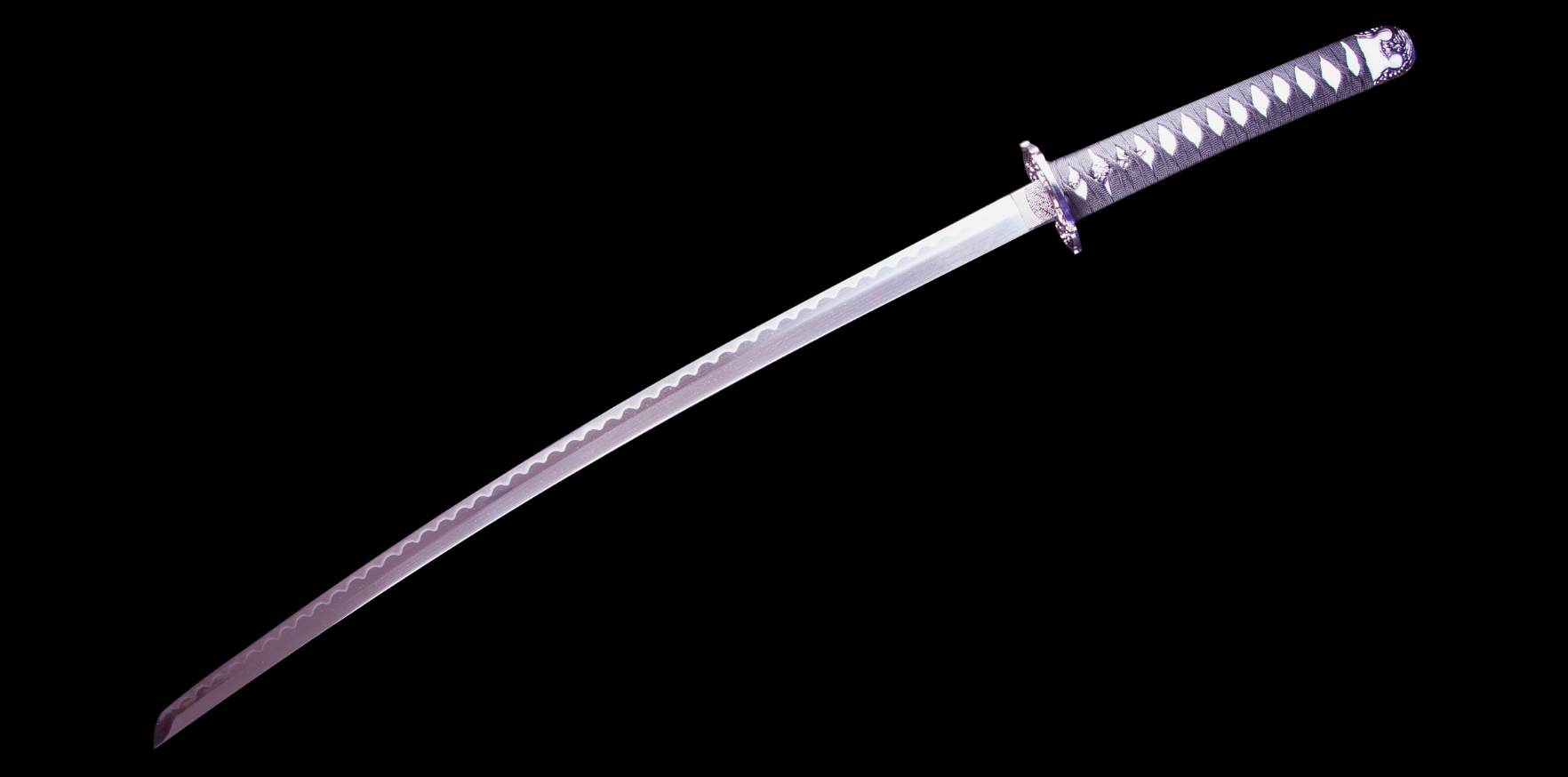
The Longsword, also called the "Bastard Sword" or "Hand-and-a-half Sword," is a famous European weapon of the late medieval and Renaissance periods. It was an emblematic sword and the main weapon of European knights. This sword is characterized by its double-edged blade and incredible versatility.
A typical Longsword measures between 33.46-43.31 (85-110 cm). Unlike the Katana, it has a straight, double-edged blade and a cruciform hilt that allows for various gripping options. The Longsword is designed for versatility, enabling a combination of thrusting and cutting techniques.
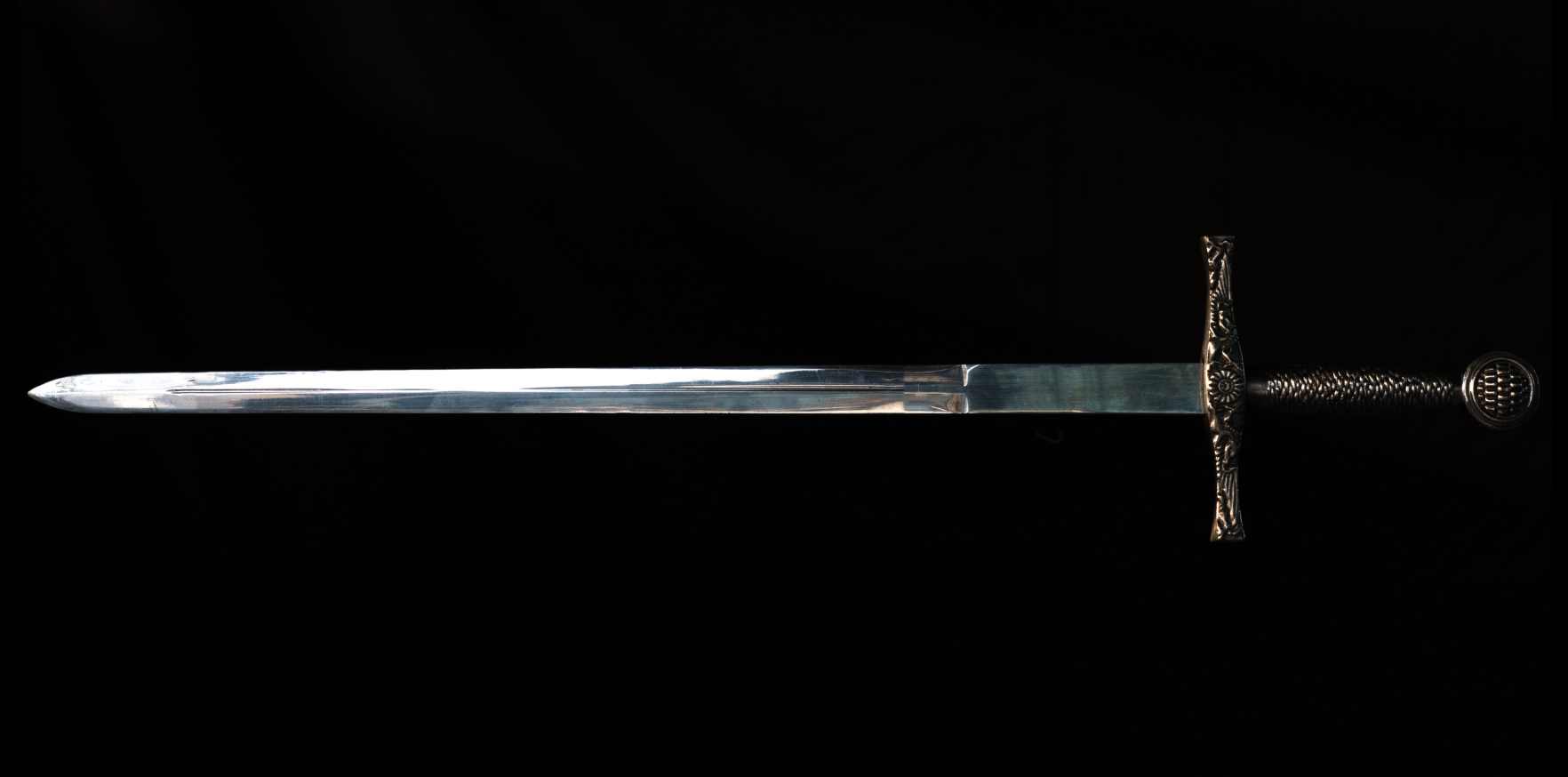
1. Katana Craftsmanship vs Longsword: A Matter of Steel and Skill
Swordsmithing in the East and West took different paths due to the influence of available resources and cultural nuances. The Katana is a single-edged sword with a pronounced curve that was made from the distinctive Tamahagane Japanese steel. The constant folding and pounding of this steel gives the Katana its unique sharpness, toughness, and flexibility.
The Longsword, on the other hand, frequently has a double-edged, straight blade made of superior European steel. To guarantee longevity and resistance to breaking, the steel is forged and tempered, giving it strength and flexibility similar to the Katana.
2. Katana Parts vs Longsword
Both swords consist of four main parts which are the blade, the guard, the handle, and the pommel. However, their design and function are different in each sword.
a. Blade
The Katana's blade is renowned for its sharpness, a result of the differential hardening process, which creates a harder cutting edge and a softer, more flexible spine. The curvature of the blade aids in cutting and drawing the sword.
The Longsword blade is straight and double-edged, designed to deliver powerful thrusts and cuts. The strength of the blade comes from its cross-sectional designs, such as the diamond or hollow-ground profiles.
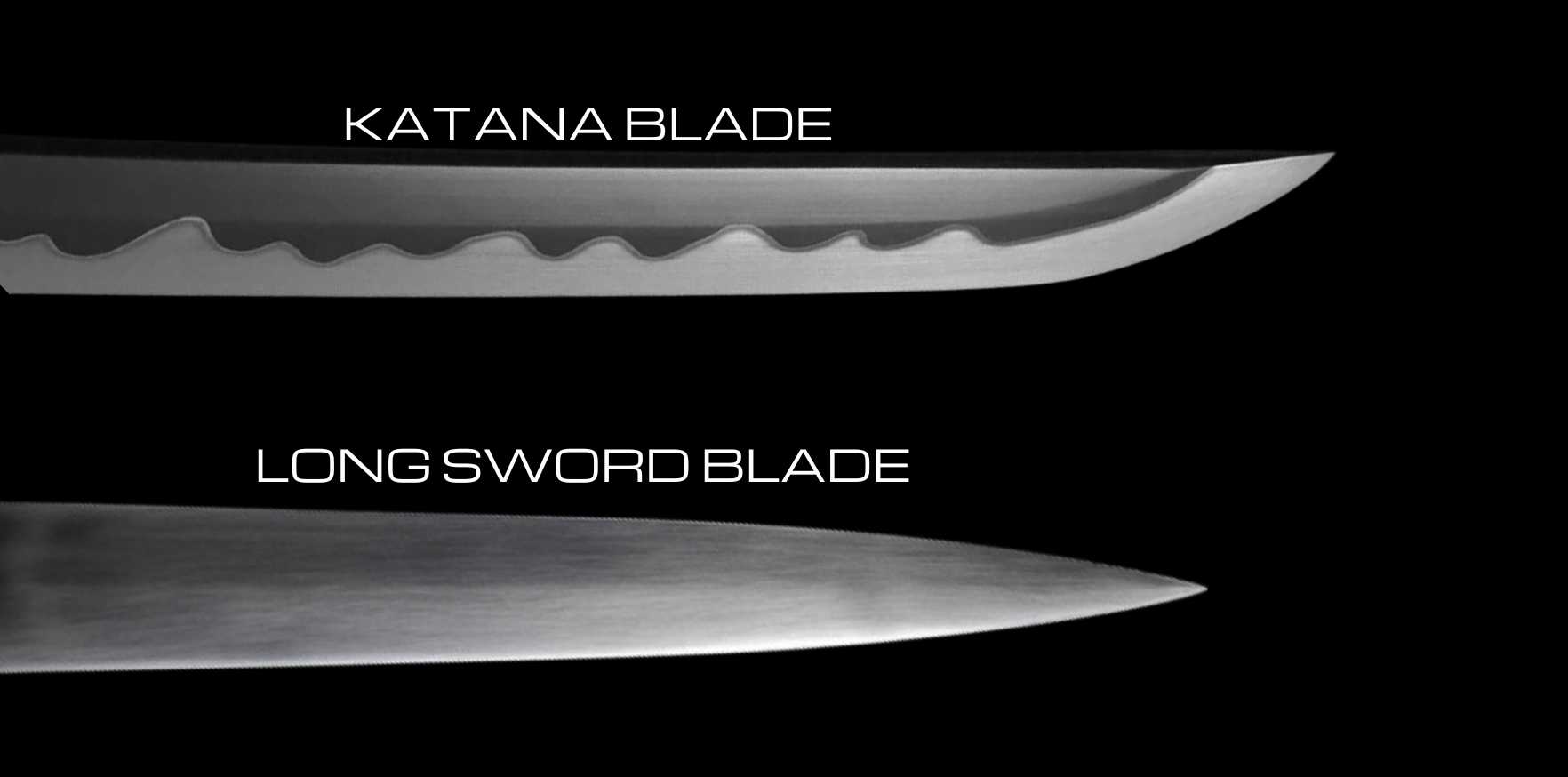
b. Guard
The Tsuba is the Katana's guard, often decorated with intricate designs. Its main function is to protect the hand from sliding onto the blade.
The Longsword's guard, or cross-guard, is more prominent and serves to protect the hand and also to aid in swordplay, such as trapping the opponent's blade.
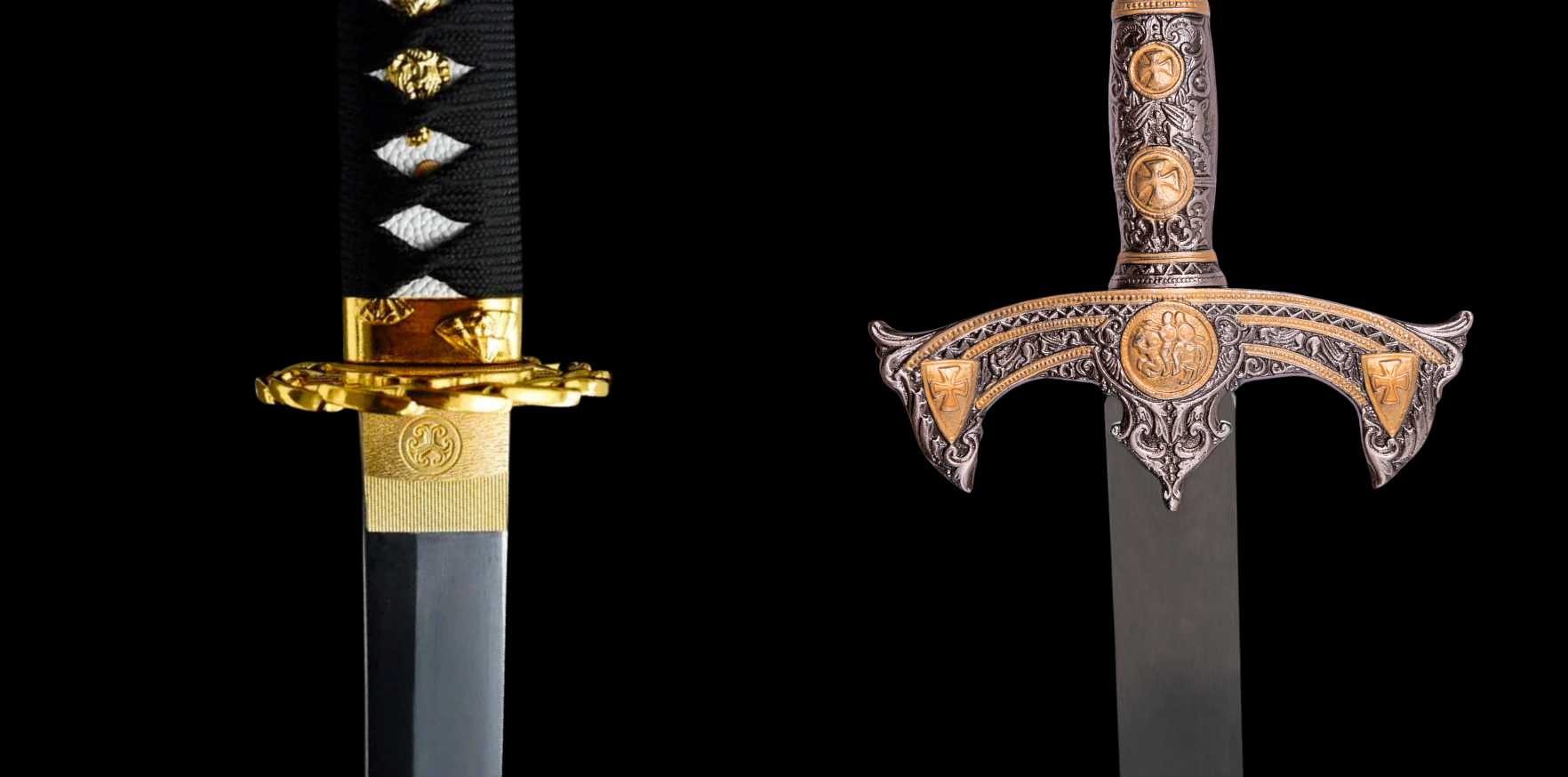
c. Handle
The Tsuka is the Katana's handle, wrapped in ray skin and silk or cotton for a firm grip. It accommodates two hands but is often used with one.
The Longsword's handle can also accommodate two hands, giving it the alternative name 'hand-and-a-half sword.' The grip is often leather-wrapped wood, providing a firm and comfortable hold.
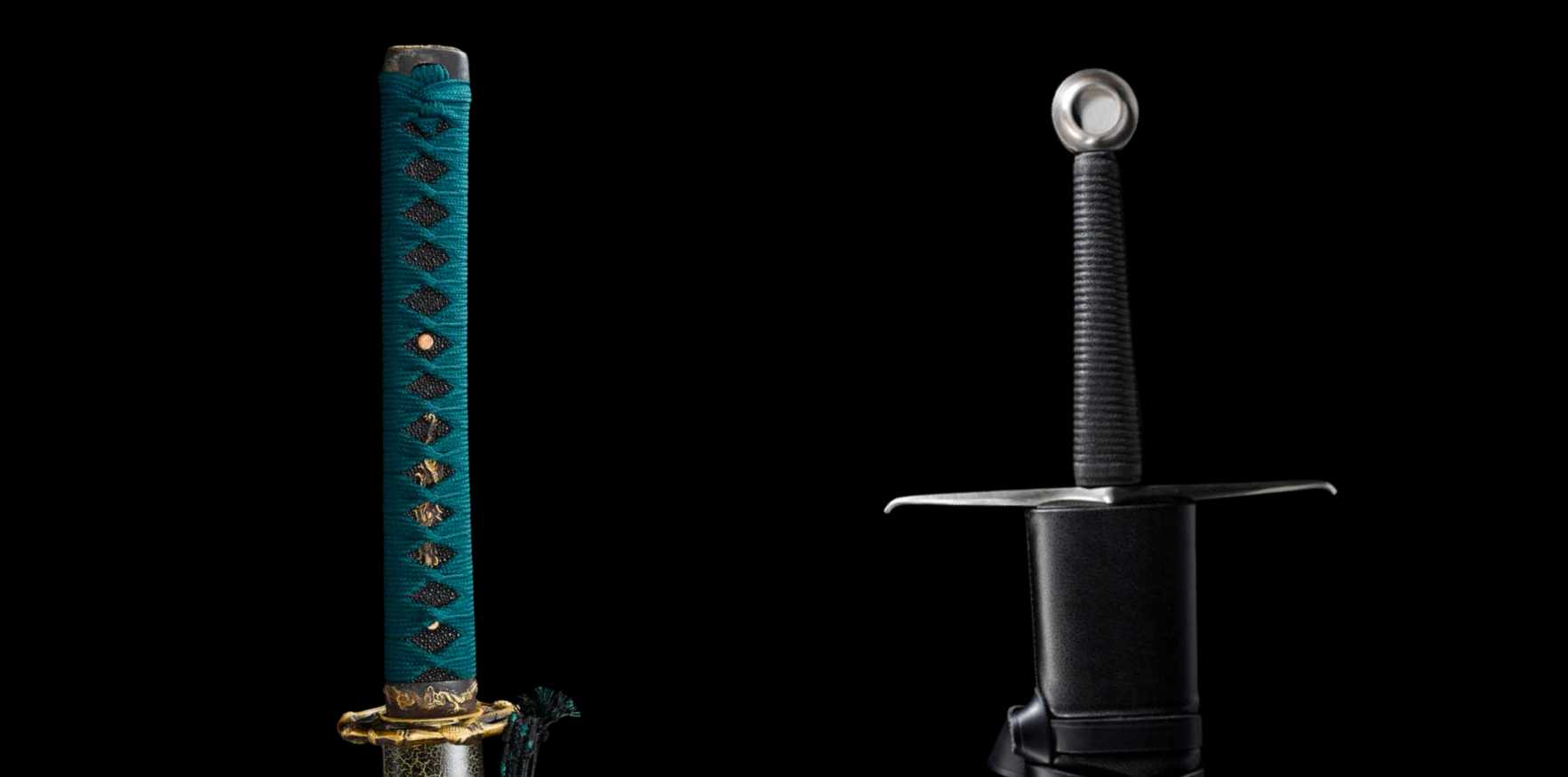
d. Pommel
The Kashira is the Katana's pommel, often decorated matching the Tsuba, and balances the blade.
The Longsword's pommel is heavier, serving to counterbalance the weight of the blade. It can also be used as a striking surface in combat.
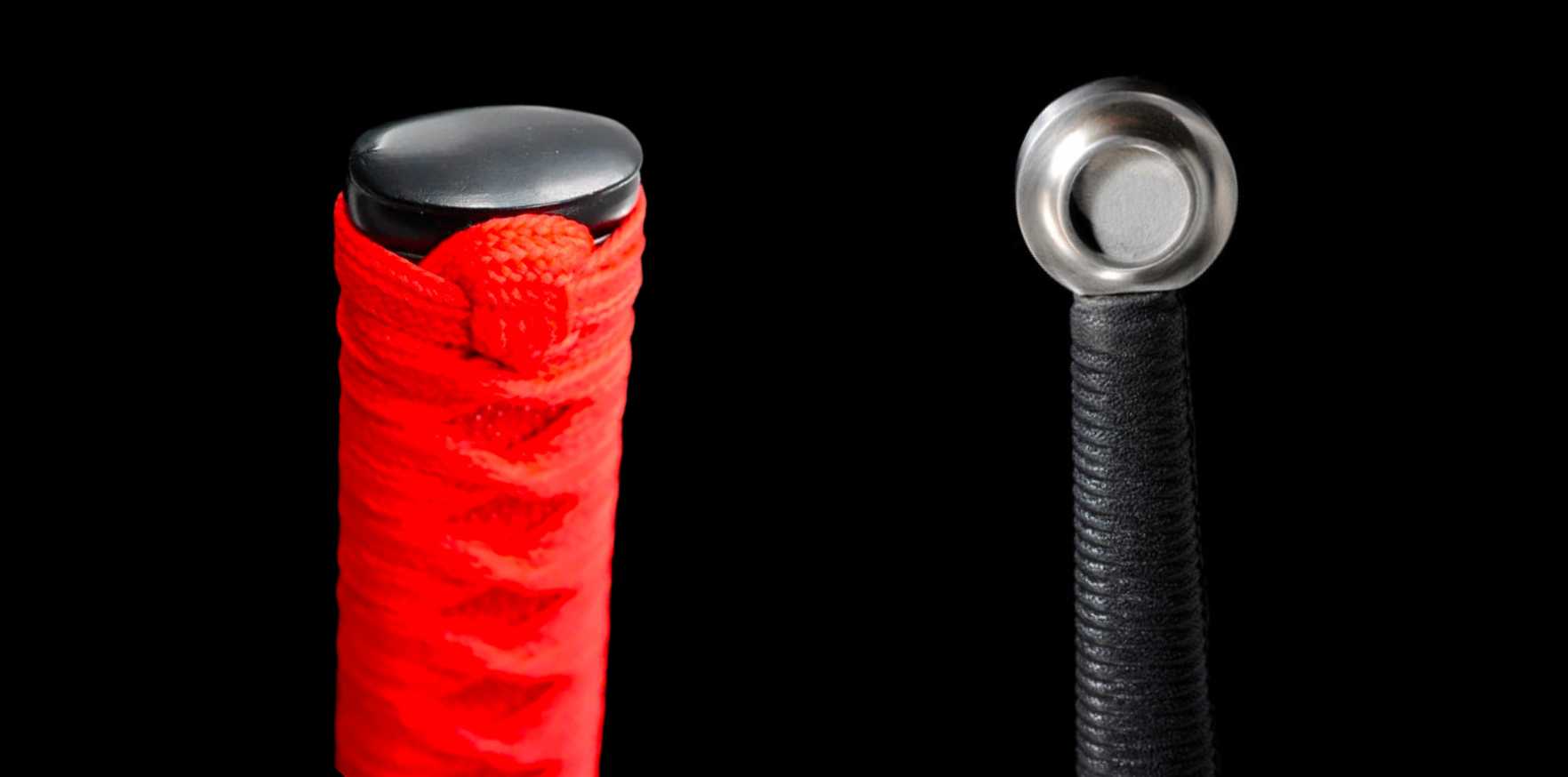
3. Katana Characteristics vs Longsword
a. Blade design
While both the Katana and Longsword have proved their effectiveness in different periods and cultures, they embody two distinct philosophies of blade design. The Katana curved blade excels in draw-and-cut tactics, especially against lightly armored foes.
On the other hand, the Longsword, with its straight, double-edged blade, offers a balance of cutting and thrusting capabilities, proving more effective against heavily armored opponents.
b. Weight of the Blade
While both swords balance strength and flexibility, the Katana is usually lighter, weighing between 2.43 to 3.53 lbs (1.1 to 1.6 kg). The katana's lighter weight allows for quicker, more precise cuts.
The Longsword, usually weighing between 2.65 to 4.85 lbs (1.2 to 2.2 kg), can deliver more powerful blows due to its weight and the leverage provided by the two-handed grip.
b. Sharpness
The Katana is often deemed sharper due to its hard edge and the finesse in Japanese sword crafting. This sharpness allows for effective cutting, a primary technique in Katana combat styles. Its unique forging process, involving folding the steel multiple times, results in a blade that can deliver devastatingly precise cuts.
The Longsword, while also sharp, is designed to balance cutting and thrusting capabilities, considering the Western martial arts' combat styles, but its primary strength lay in its thrusting capability, especially against armored foes. The weapon's versatility made it equally effective in one-on-one duels and battlefield scenarios.
c. Grip
The Katana's grip is longer, allowing for one or two-handed use. The Longsword's grip is designed primarily for two-handed use, providing more power and control during swings.
d. Balance
Both swords aim for balance to provide control during sword fighting. The Katana's balance is generally closer to the hilt for swift, accurate cuts, while the Longsword's balance is often slightly further from the hilt, providing powerful swings.
e. Durability
Both swords are durable, each in their ways. The Katana excels in edge retention, while the Longsword is robust and can withstand intense combat.
f. Reach
The Longsword often has a longer reach due to its straight design and the longer grip, offering an advantage in some combat situations.
4. Katana Combat Style vs Longsword
The Katana is designed for swift, precise cuts and draws, reflected in the Japanese martial arts like Kenjutsu and Iaido, making it ideal for one-on-one encounters.
The Longsword is more versatile, employing both defensive and offensive strategies, suitable for powerful cuts, thrusts, and even grappling techniques, as seen in Historical European Martial Arts (HEMA).
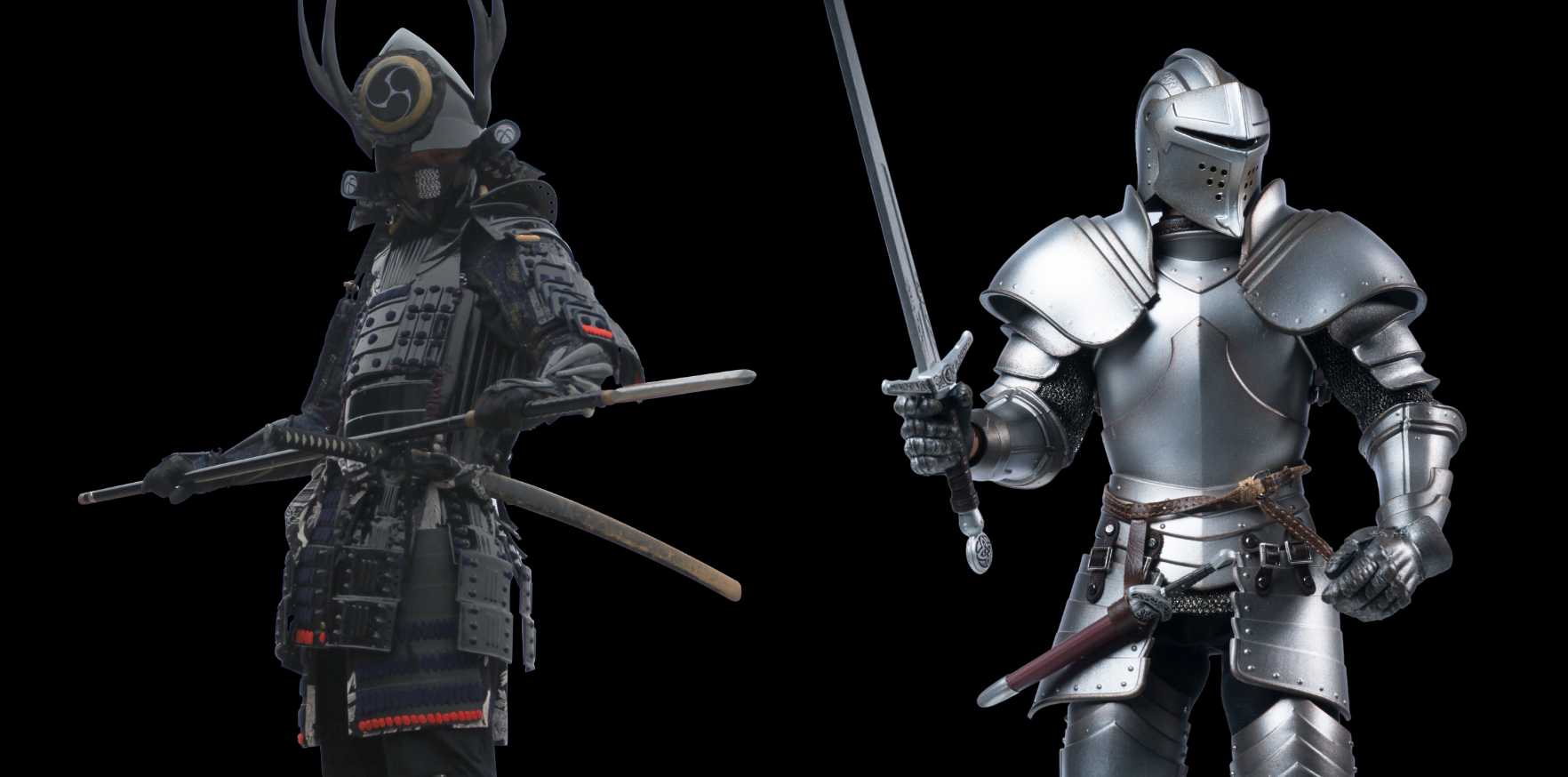
5. Katana Maintenance vs Longsword
Both swords require regular cleaning and oiling to prevent rust. The Katana often needs a more specialized cleaning routine due to its unique construction and sharper blade.
6. History and Origin of the Katana vs Longsword
a. History and Origin of the Katana
The Katana came into being during the Kamakura period (1185–1333) in Japan, primarily used by the Samurai class. It's not just a weapon but a symbol of the Samurai's honor and an object of art, often adorned with intricate designs.
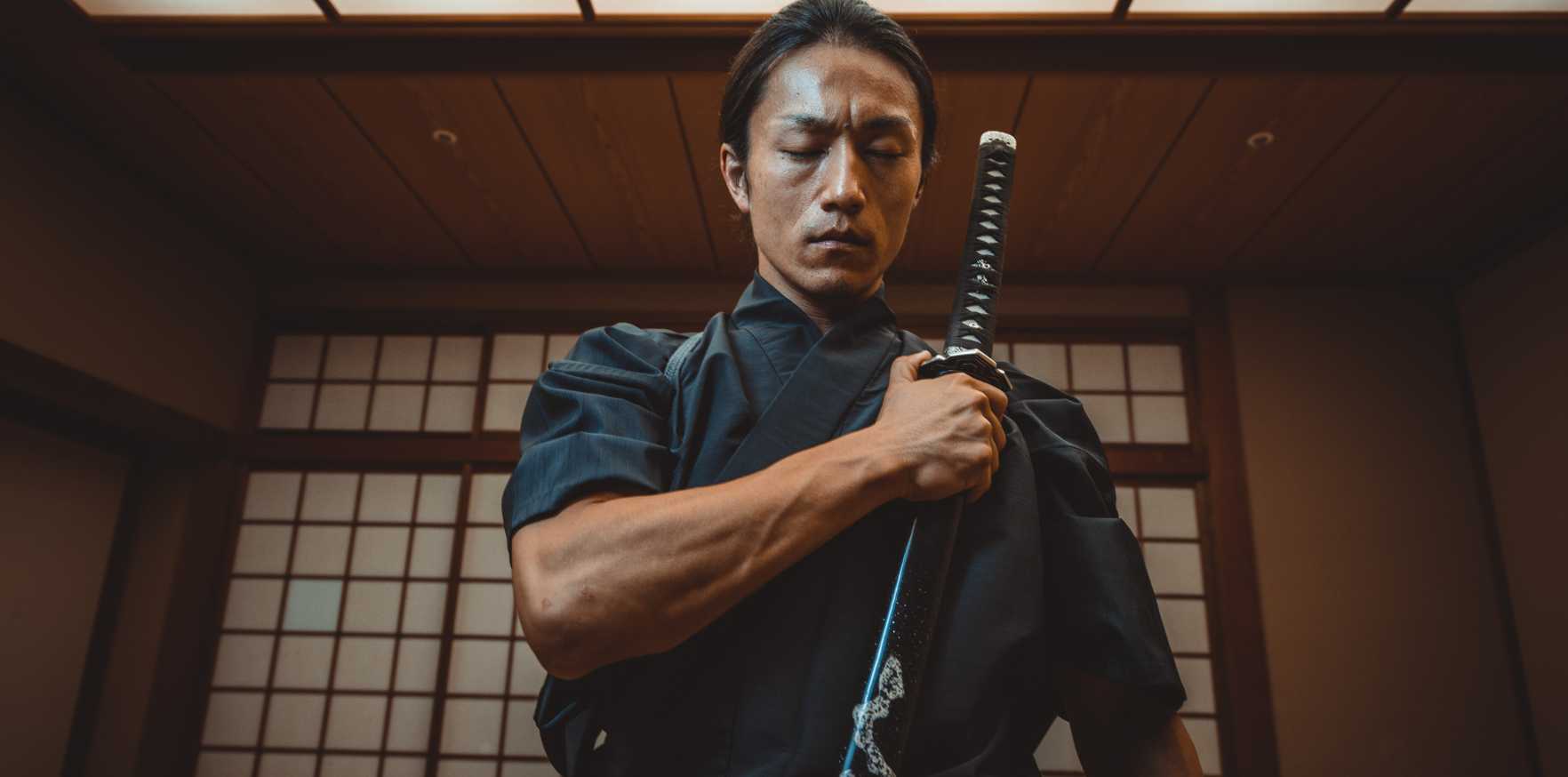
b. History and Origin of the Longsword
The Longsword emerged during the late medieval period in Europe, gaining popularity in the 13th to the 17th century. It was the weapon of choice for knights and other warriors, used in warfare and for judicial duels.
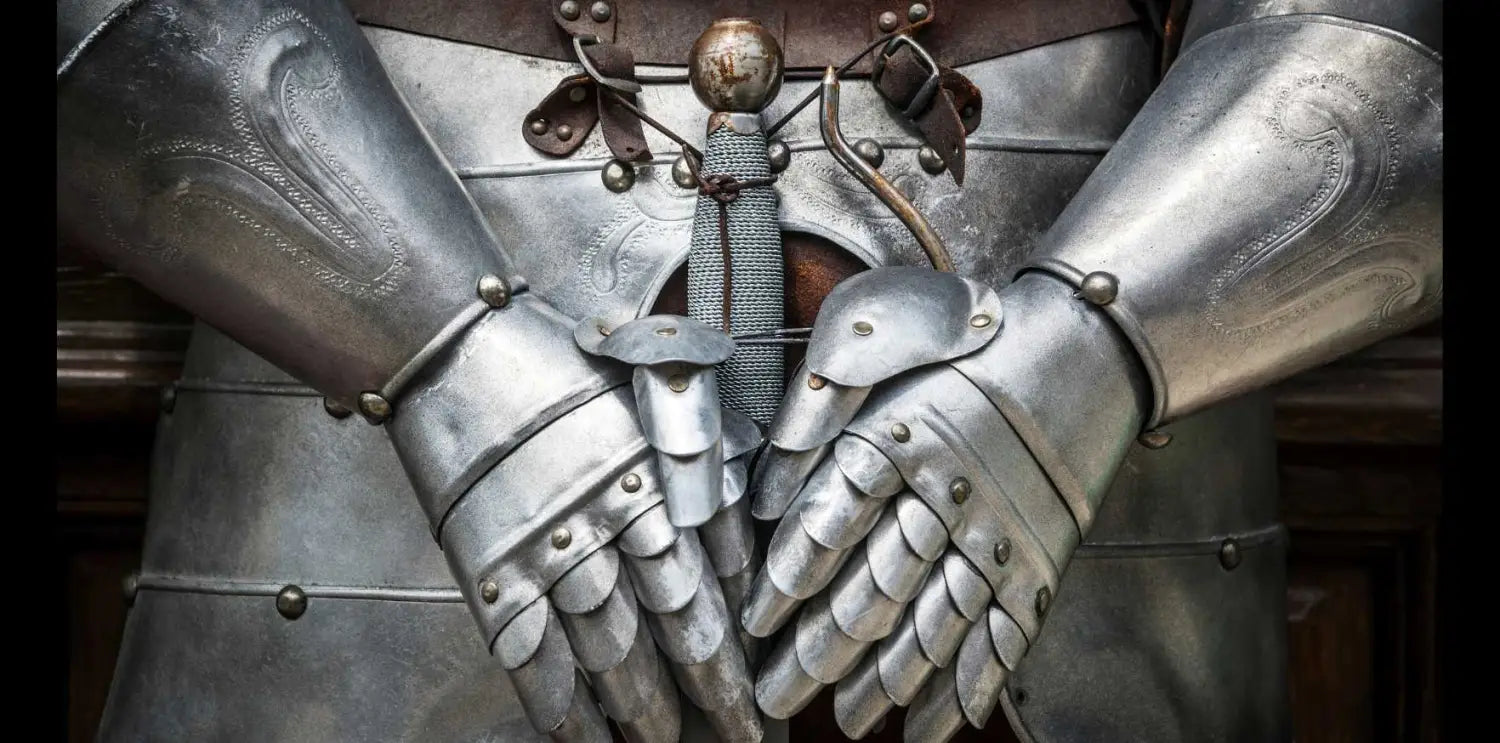
Conclusion...
Comparing the Katana and the Longsword isn't a matter of deciding which one is superior. Each sword excels in specific situations. Both these swords are legendary in their own right, and they reflect the martial cultures and battlefield necessities of their respective eras.
While the Katana symbolizes the Samurai's precision, discipline, and 'one-strike' philosophy, the Longsword represents the European knights' focus on versatility, adaptability, and the capacity to face heavily armored opponents. Each has its unique strengths, and their popularity, even centuries after their inception, testifies to their iconic status in the realm of historical weaponry.
As we appreciate these historical weapons, we gain insight into our past, understanding the technological innovations, martial philosophies, and cultural values of bygone eras. The Katana and Longsword stand as symbols of their times, providing a captivating lens through which we can explore our shared human history.
For beginners, choosing between a Katana and a Longsword should depend on their interests and the martial arts style they wish to learn. The Katana might suit those interested in learning swift cutting techniques and the grace of Japanese swordsmanship. In contrast, the Longsword would be apt for those interested in diverse combat techniques, including cutting, thrusting, and even grappling, prevalent in Western martial arts.
While the Katana requires more specialized maintenance, beginners should not be daunted as they will be taught these essential care routines in the course of their training. The Longsword, on the other hand, albeit sturdy, also needs a regular maintenance schedule to guarantee its durability and performance.
The option between the Katana and the Longsword is ultimately a choice between two different martial ideologies as well as two different types of weaponry. It is a trip into the art of swordsmanship as well as an investigation into two rich histories.
Therefore, whether you select the Katana or the Longsword, keep in mind that mastering any weapon involves self-control, commitment, and respect for the blade. Embrace the journey and the wisdom these ancient weapons will undoubtedly impart.
In the world of martial arts, there's a saying: "It is not the sword that makes the warrior, but the warrior that makes the sword." Happy training!


